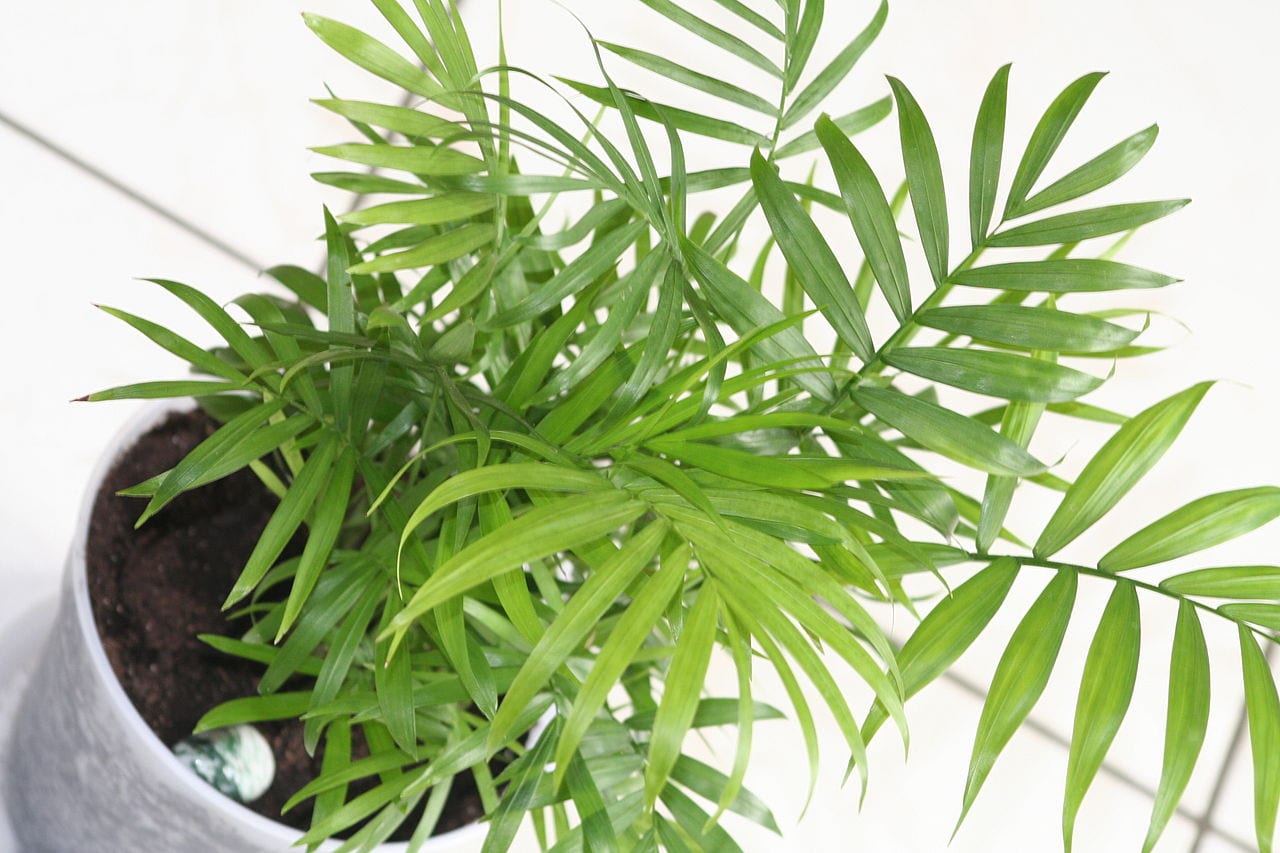
Palm trees are very beautiful, elegant and stylized plants, but they are usually only planted in gardens. The height of most of them makes it impossible to grow them in pots, but, although few, there are some that can be planted in pots.
If you want to know which are the most suitable types of palm trees, here you have our selection.
Types of Dwarf Palms
If you are looking for dwarf or small palms to grow in pots, you should know that, in general, the species that have these characteristics do not tolerate the cold much. But this should not worry you excessively, since you can have them indoors during the winter.
Allagoptera arenaria
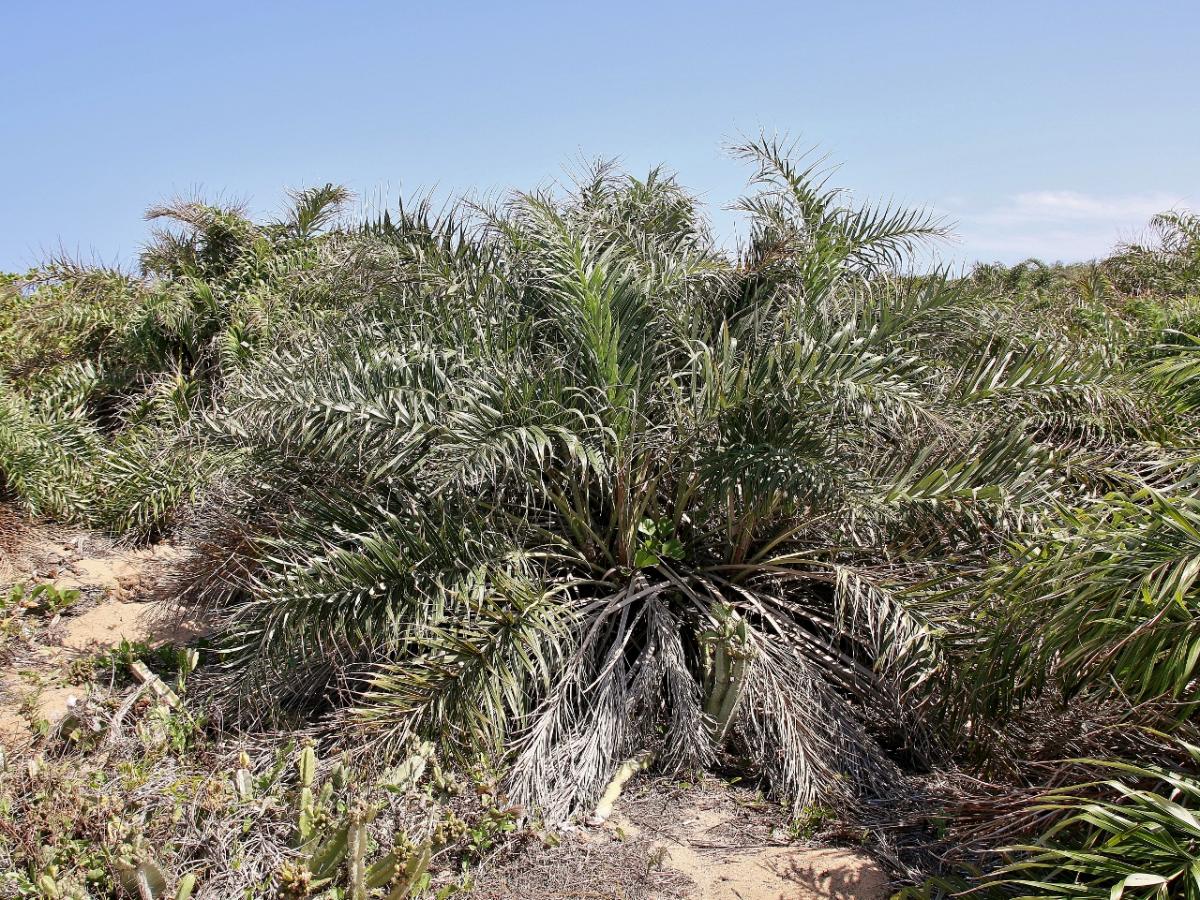
Image - Flickr / Mauricio Mercadante
La Allagoptera arenaria It is a small palm tree it reaches less than 2 meters in height, being the usual 1,5-1,8 meters. But yes, it has long pinnate leaves, up to 1,5 meters, so its general appearance is that of a very, very beautiful plant. These arise from an underground trunk, so it gives the impression that they really sprout from the ground.
It tolerates marine environments, since its natural habitat is precisely the coastal areas and beaches. But yes, in a pot it should be planted in a mixture of peat and perlite in equal parts so that it grows well. In addition, it is important that it is placed in a sunny place, and that it is protected from the cold if the temperature drops below -3ºC.
Butia archeri
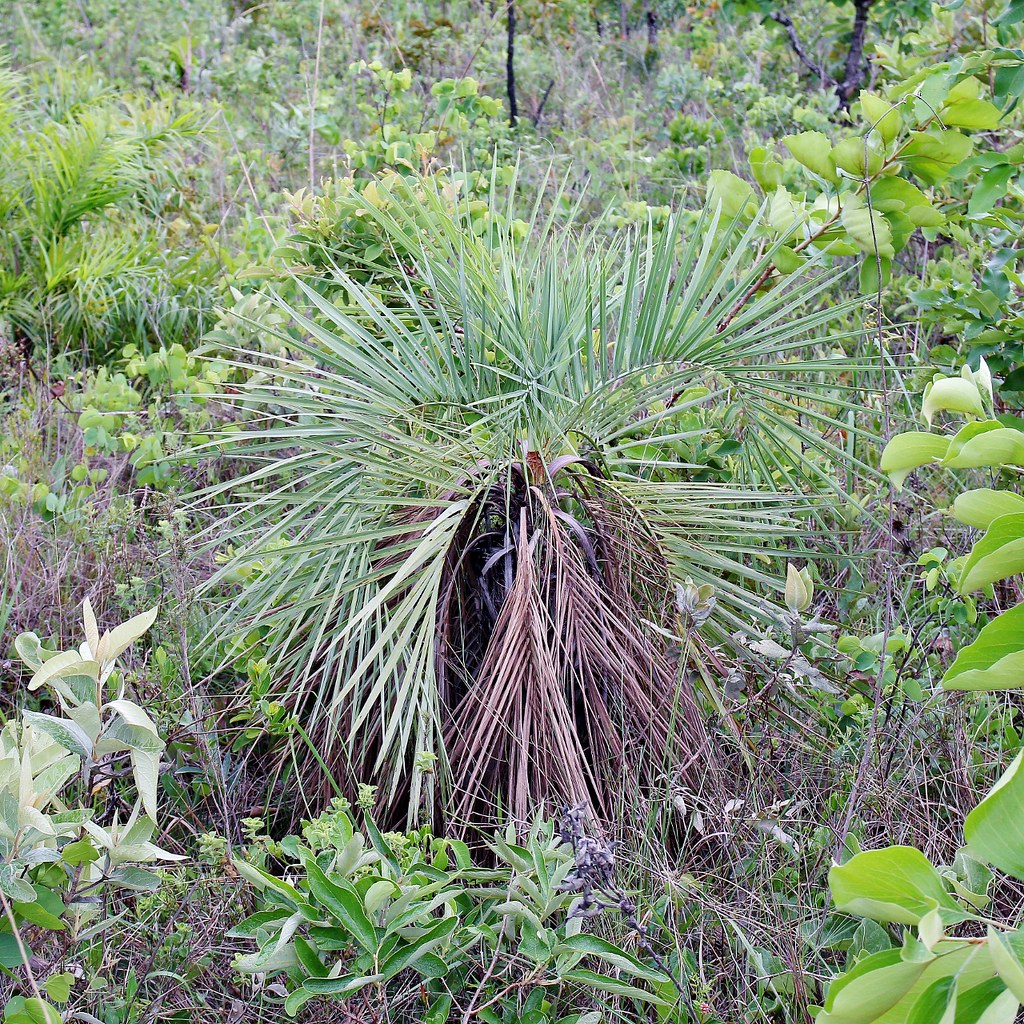
Image - Flickr / Mauricio Mercadante
La Butia archeri It is the smallest species of the genus of butya. It is known as the palm tree of the field, and it only reaches one meter in height. The trunk is about 30-35 centimeters thick, and is crowned by pinnate, very arched olive-green leaves.
You have to place it in a sunny area, or in semi-shade. Otherwise, it resists weak frosts, down to -2ºC.
Genus Chamaedorea
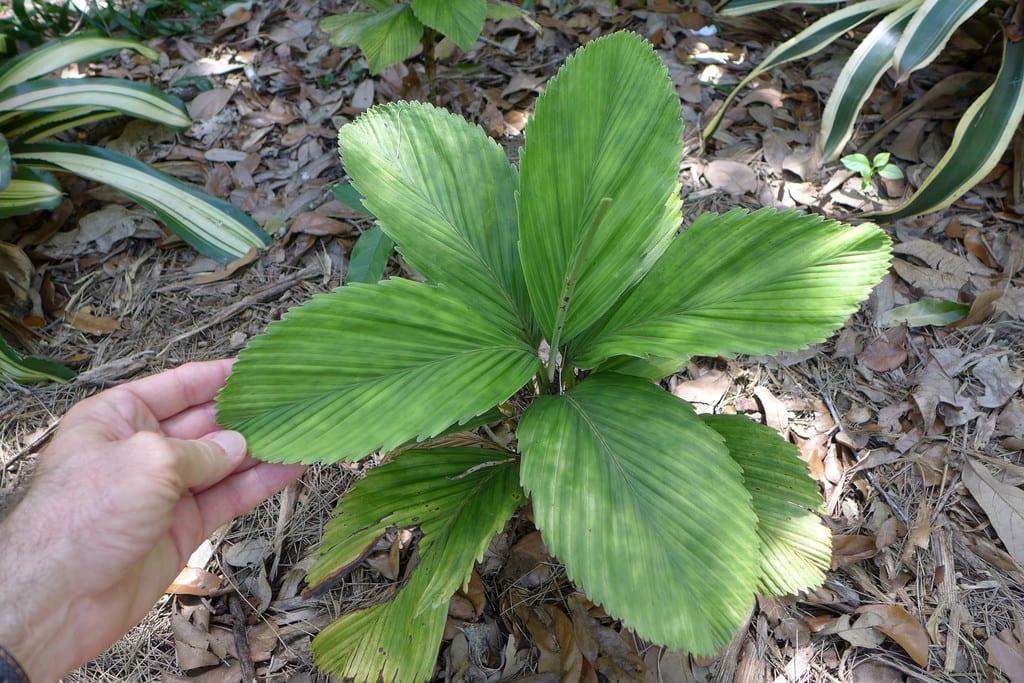
Chamaedorea nutckeimii
The Chamaedorea palm genus is made up of species that happen to be perfect for growing in pots. Most do not exceed 2-3 meters in height, but even those that grow the most, such as Chamaedoa Radicalis.As it has a thin trunk, you will not have to pass it to the ground. There are them with pinnate leaves, like the Chaamedorea elegans that you can see in the image that heads the article, or with undivided sheets, like the one in the image above.
These plants are the most suitable to grow in areas where the sun does not reach directly, both indoors and outdoors -as long as the minimum temperature is higher than -3ºC-.
The most suitable species for pots are:
- Chamaedorea elegans: it is a small palm with a single trunk that is usually sold in pots with multiple seedlings. Its leaves are pinnate, green.
- Chamaedorea ernesti-augustii: This is a single-trunk palm tree that reaches 2 meters in height. Its leaves are bifid, with wide leaflets.
- Chamaedorea metallica: it is a very curious camadorea, which has bifid leaves; that is, with two leaflets, wide and bluish green or metallic. It grows up to 3 meters high. It is a great option when looking for a palm tree for the terrace.
- Chamaedorea oblongata: it is also a species with a single trunk that reaches a size of 3 meters in height. Its leaves are pinnate, with pinnae or wide leaflets.
- Chamaedoa Radicalis.: it is a species that generally develops a solitary trunk, although it may be the case that they do not. Its maximum height is 4 meters, and its leaves are pinnate, green.
Chamaerops humilis
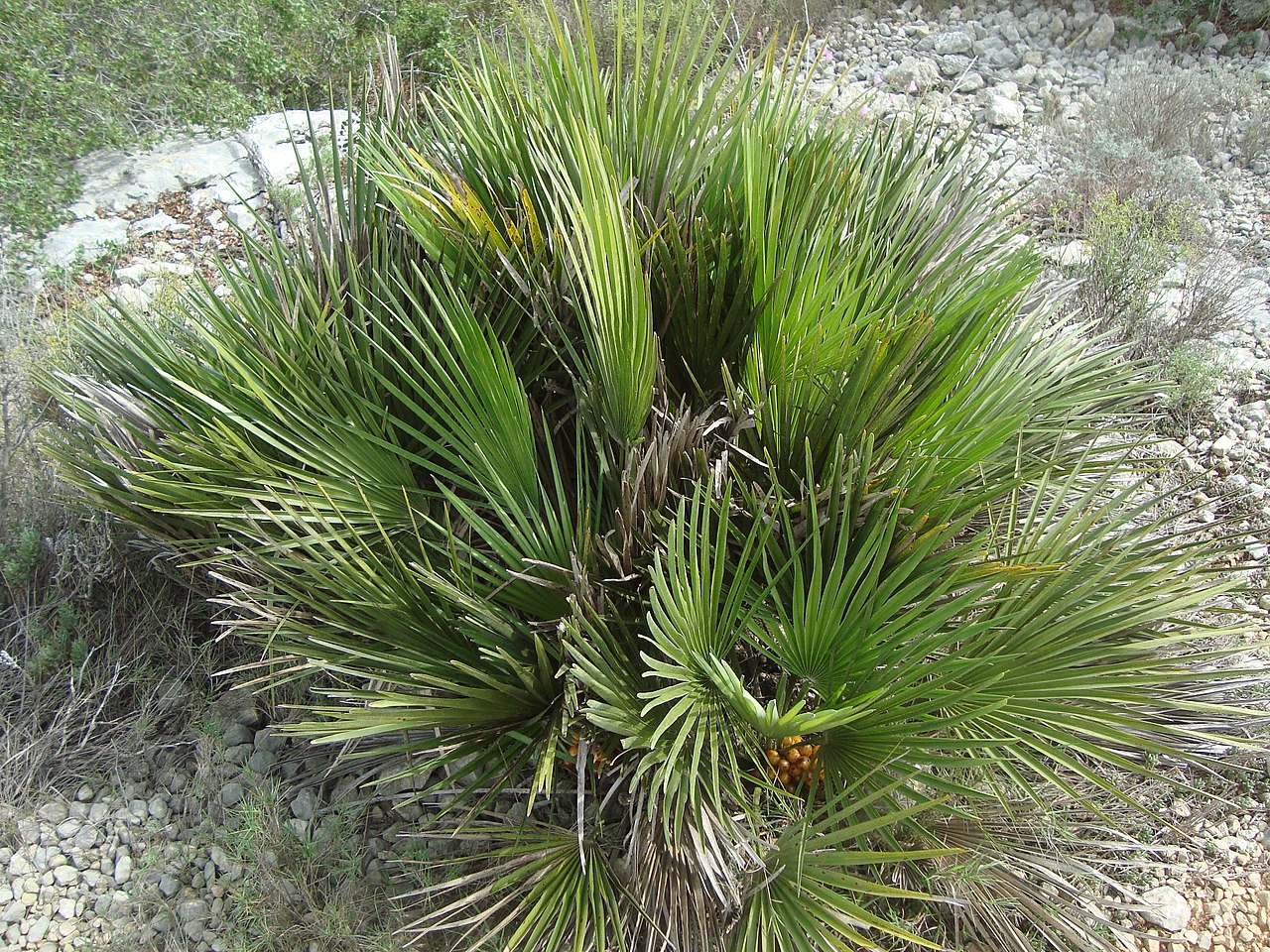
Image - Wikimedia / Juan Emilio Prades Bel
The Chamaerops humilis It is true that they have a great tendency to take out young children, but they can live well in large cement pots or other material, where they will grow without exceeding Meters 4. They have green, webbed leaves and a maximum trunk thickness of 20-25cm. So, go ahead and put a Chamaerops on your sunny terrace. Resists up to -7ºC.
Minute Dypsis
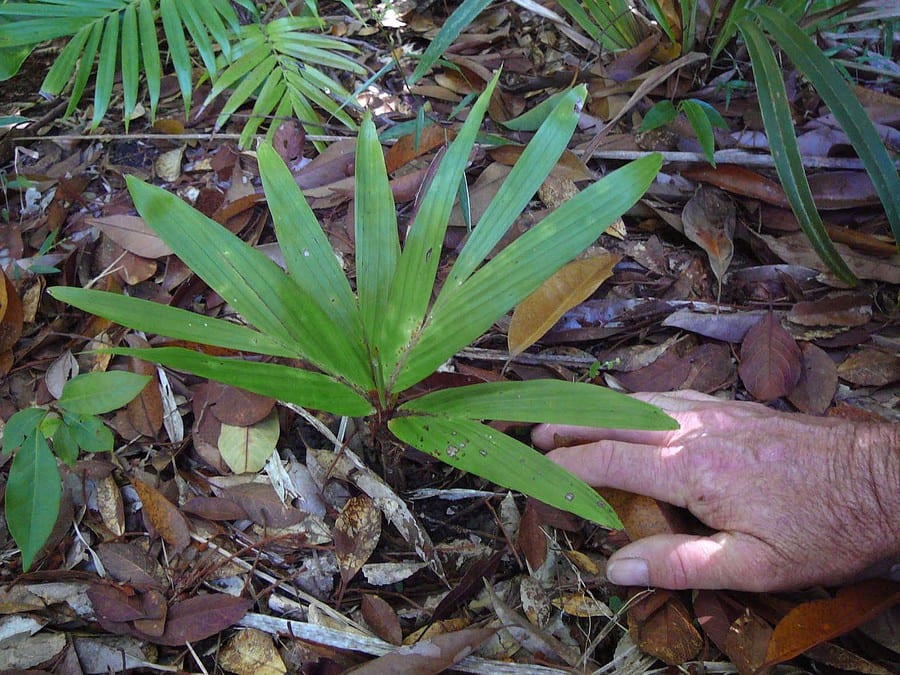
Image - PACSOA
La Minute Dypsis it is really a mini palm tree. Grows only 50 centimeters tall, and develops about 5-8 forked leaves of green color. It is very, very rare, but if you get it, it will surely surprise you, but it is important that you know that it is a tropical species; In other words, it does not resist cold or frost at all.
The ideal temperatures for it are between a maximum of 30ºC and a minimum of 10ºC. In addition, it needs high humidity, and protection from the sun.
Nannorhops ritchieana
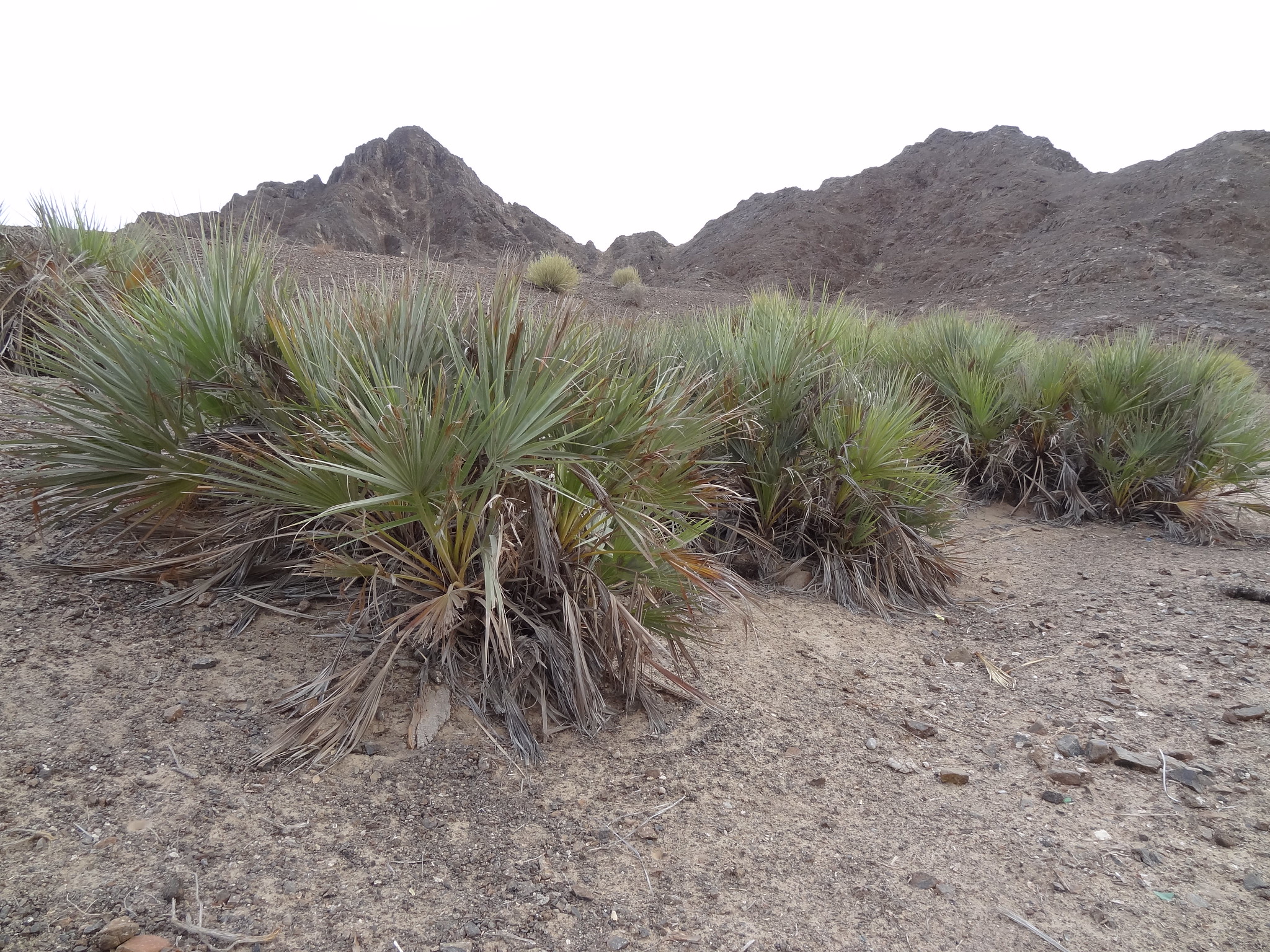
Image - Flickr / بوبدر
La Nannorhops ritchieana It is an outdoor palm tree, multi-stemmed, with a bushy appearance. Reaches a height of 1 to 3 meters. The leaves are fan-shaped, and can be greenish-blue-glaucous, or green depending on the variety. It is not a very common species, but we think it has a lot of potential, since it resists drought and high temperatures (40-45ºC) well. It also supports cold and frosts down to -4ºC.
roebellini phoenix
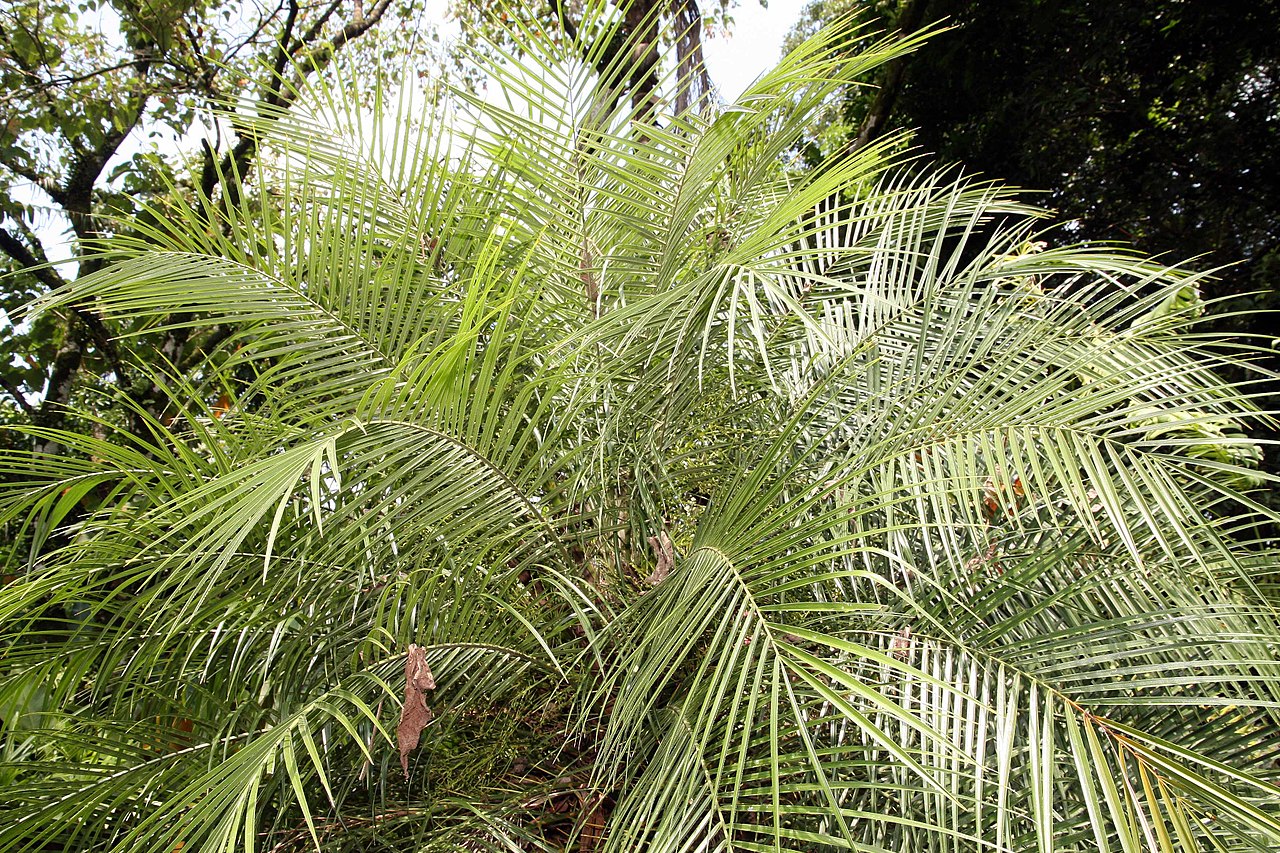
Image - Wikimedia / David J. Stang
La phoenix roebellinii it is one of the smallest of the genus Phoenix. It grows up to 2 meters in height, and it also has a thin trunk, up to 20cm in diameter. Its leaves are pinnate, and they are slightly inclined downwards, a characteristic that, without a doubt, is very interesting, since it gives it an amazing exotic appearance.
This palm tree will look great in bright rooms, or outside in shady corners. Supports up to -3ºC.
raphis excelsa
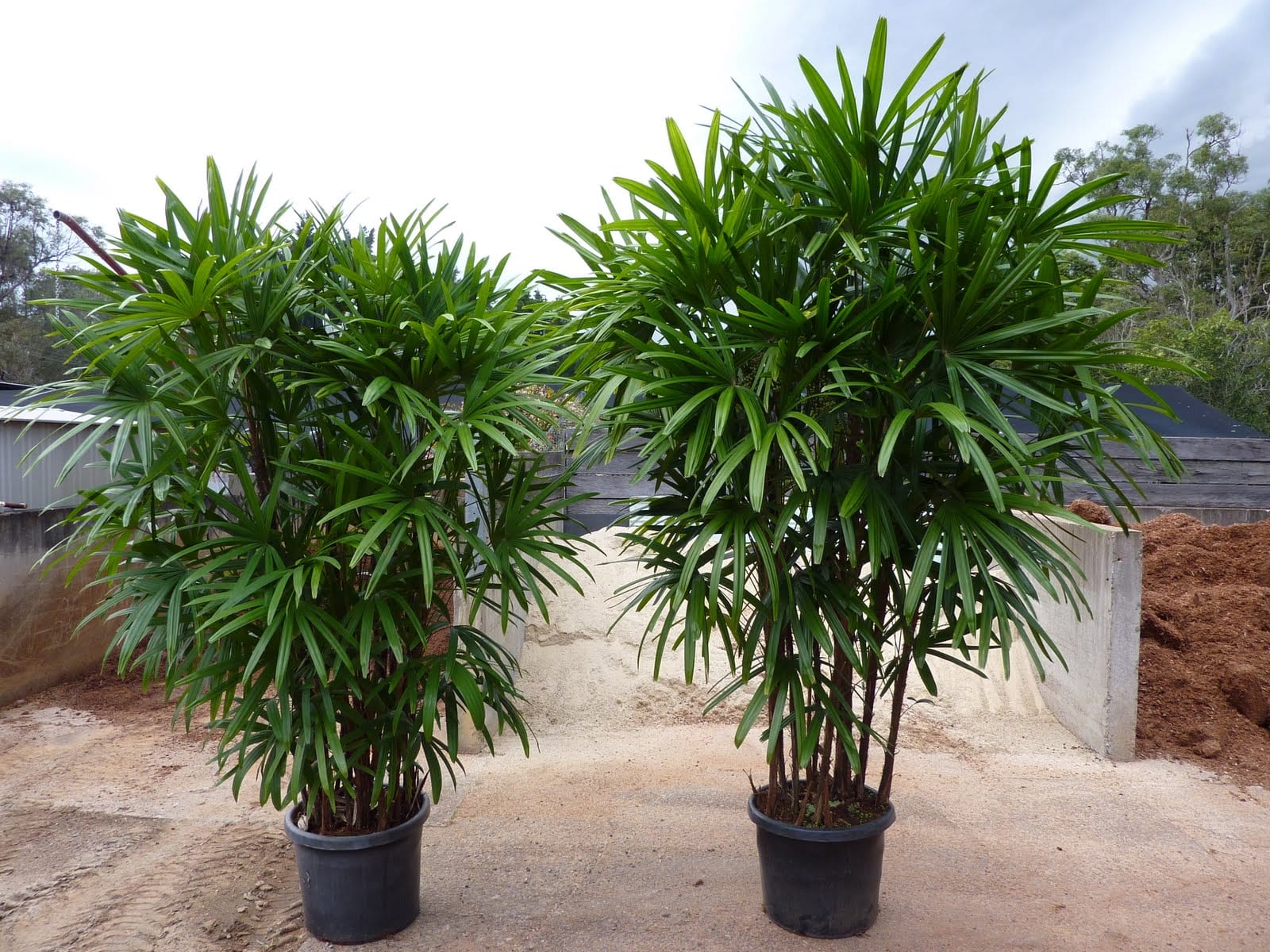
Image - raphis palm
La raphis excelsa It is a palm tree that is usually sold as an indoor plant, and it is very curious. It has webbed leaves, with very well defined leaflets, of a dark green color. It is very interesting to have inside the home, since does not exceed 3 meters in height, and its trunk always remains very thin, up to 5 centimeters thick.
It can also be had outside if the climate is tropical, in an area of semi-shadow.
Serenoa repens
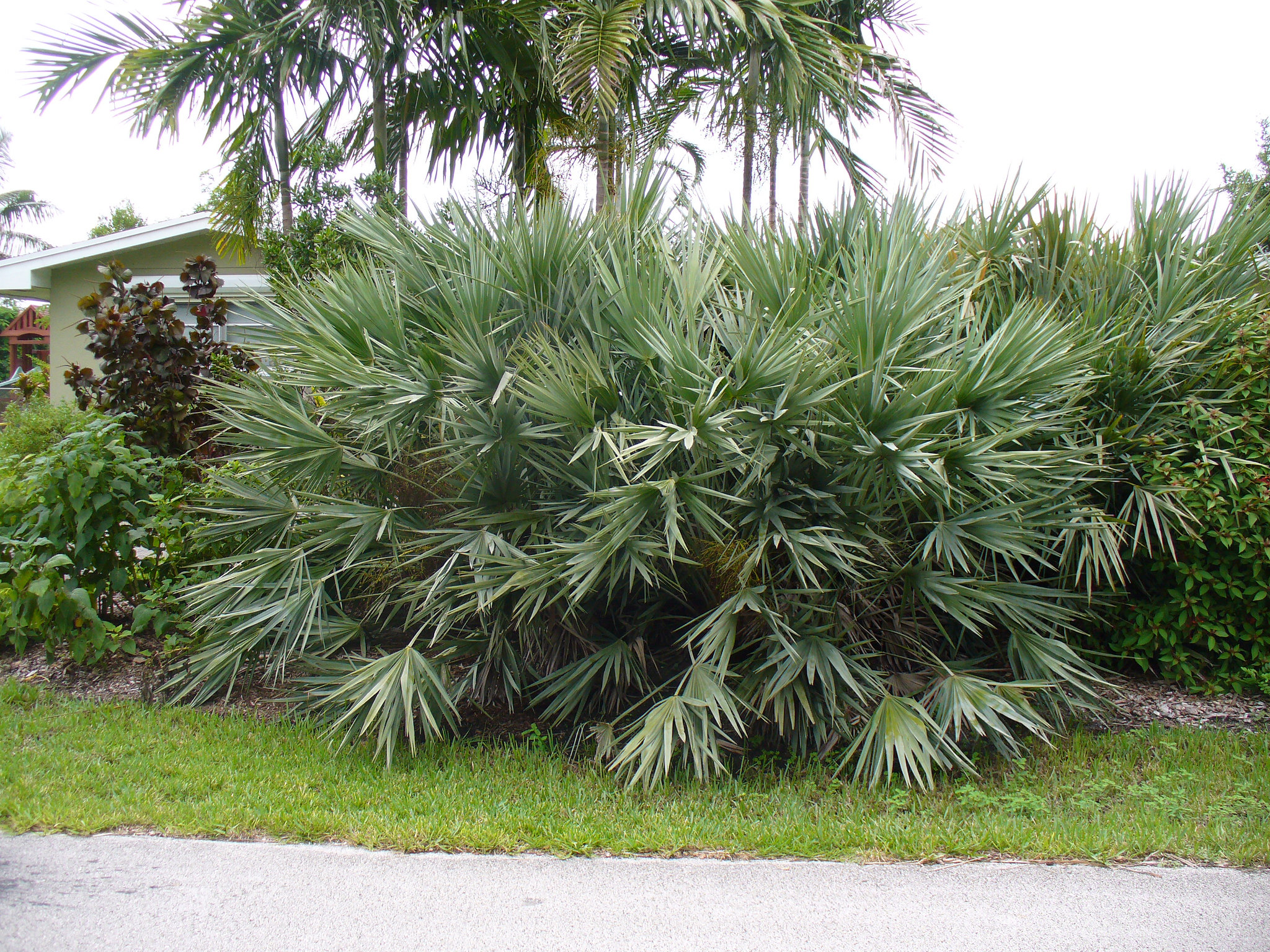
Image – Flickr/Scott Zone
La Serenoa repens It is a multicaule palm that reaches over 3 meters in height. The leaves are palmate, of a nice green color. In addition to its natural beauty, it is interesting to note that it can live in a wide variety of climates, from temperate to tropical.
Put it in the sun, water it from time to time and you will only have one thing left to do: enjoy it to the fullest. The best thing is that it can be a palm tree to have in a -large- planter. It resists up to -4ºC.
Thrinax parviflora
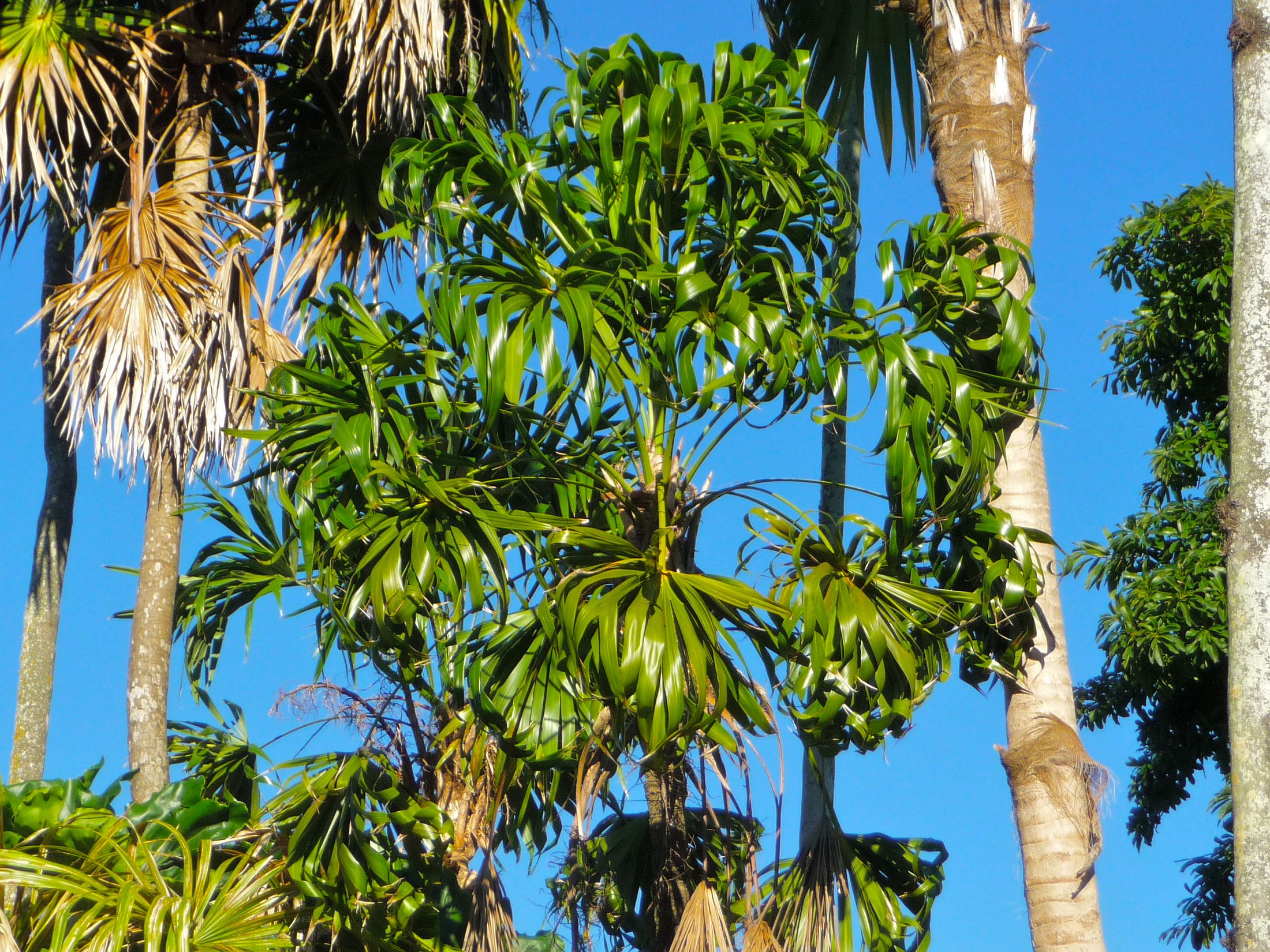
Image - Wikimedia / Kyle Wicomb
La Thrinax parviflora It is a multicaule palm that can grow between 1 and 10 meters, with very thin trunks barely 15 centimeters in diameter. For this reason, although it grows a lot in height, it doesn't really need much space, and it can be potted without problems. The leaves are webbed, and green in color.
It is a plant that has to be grown in sunny areas, so whenever possible it will be better to keep it outside. The only drawback is that it does not support frosts, only down to -1ºC and provided they are punctual and of very short duration.
What are the care of potted palm trees?
To finish, we are going to tell you how to care for potted palm trees. Of course, keep in mind that these are general tips, since each climate is different. Let us begin:
What is the best pot for a palm tree?
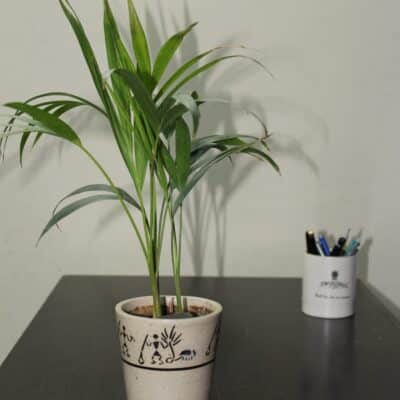
Image – Wikimedia/RJ Raawat
It is important to choose it well; not surprisingly, you will be using it for a long time. That's why, we will have to get one that measures between 10 and 15 centimeters more in width and height than the one it has at the moment, and that also has holes in its base. Those containers that do not have drainage holes are not useful for plants, except for aquatic ones.
If we talk about the material, this is indifferent. If we want our potted palm to be outside, we recommend choosing a clay one, as this allows the roots to grow better by being able to "grab on". Plastic, being a smooth material, does not allow this.
But if you intend to buy more varieties, in the end it will be more worthwhile to plant them in plastic pots.
What substrate to put on it?
The substrate has to be spongy, light, and rich in organic matter. For example, we can put any of these:
- Substrate for green plants of the brand Flower or of that of Westland.
- Terra Professional, from weedness.
- world earth, of Flower o fertiberia.
When should it be paid?
Whether your palm tree is indoors or outdoors, it is necessary to pay in spring and summer. To do this, you have to use specific fertilizers for them, or for plants. Any brand will do: Flower, Compo, etc. In any case, if you prefer to use natural fertilizers, we recommend guano.
How many times should potted palm trees be watered?
This will depend a lot on the climatic conditions in the area where the plants are being grown. But usually, you have to water them two or three times a week during the summer, as long as it doesn't rain, because if this happens, we would have to space out the risks. In winter, on the contrary, we will water much less.
At the time of watering, it is important that the water is poured onto the ground, until it comes out through the drainage holes.
Thus, your palm trees will be very beautiful.
Hi, good morning ..
Might you help me; I have a Phoenix roebellinii plant with two arms (like twins), from one arm all the little arms of the leaves fell silent, and only the pure stem remained.
My question is: does it grow more leaves on that stem? What do I have to do to keep it from drying out? Can I get it back?
Hi Roxana.
If the apex, that is, the growth guide, has not been affected, new leaves will sprout; otherwise nothing can be done. To find out, the only thing to do is wait 🙁. If you see that that stem turns black and begins to look bad, you can prune it and put healing paste on the wound (on the palm tree) to prevent fungi from damaging it.
How often do you water it? It is important to avoid that the soil is permanently damp, since otherwise the roots could easily rot. If you have a plate underneath, remove the excess water ten minutes after watering.
A greeting.
hello, I have a palm tree that I want to put in a large pot… okay?
Hi valeria.
Sorry, but I didn't understand you. What kind of palm tree is it? If it is one of the Phoenix or Syagrus genus, I do not recommend it. They can grow well in pots for a few years, but there would come a time when they would need to be in the ground.
If you want, get in touch with us through our Facebook profile and send us a photo. We will respond to you as soon as possible.
A greeting.
Good
I would like to have a palm tree that is always in the pot (20-30 Liters), which one do you recommend? Thanks a lot
Hi Luis Carlos.
More than a palm tree, I would recommend a Cyca, either the Cycas revoluta or the Cycas circinalis.
If you want yes or yes a palm tree, the roebellini phoenix it is the one that would be best in a pot.
Regards!